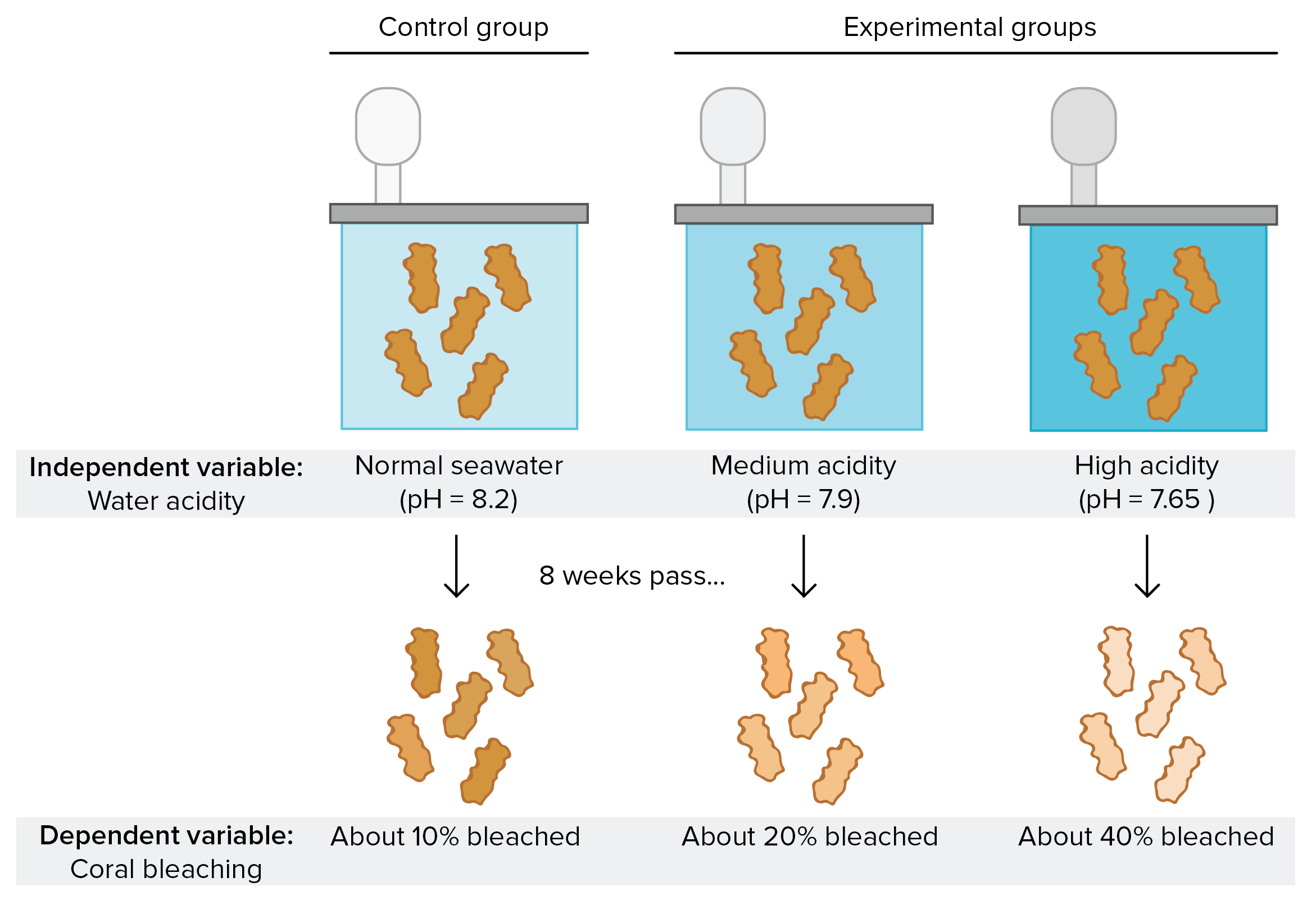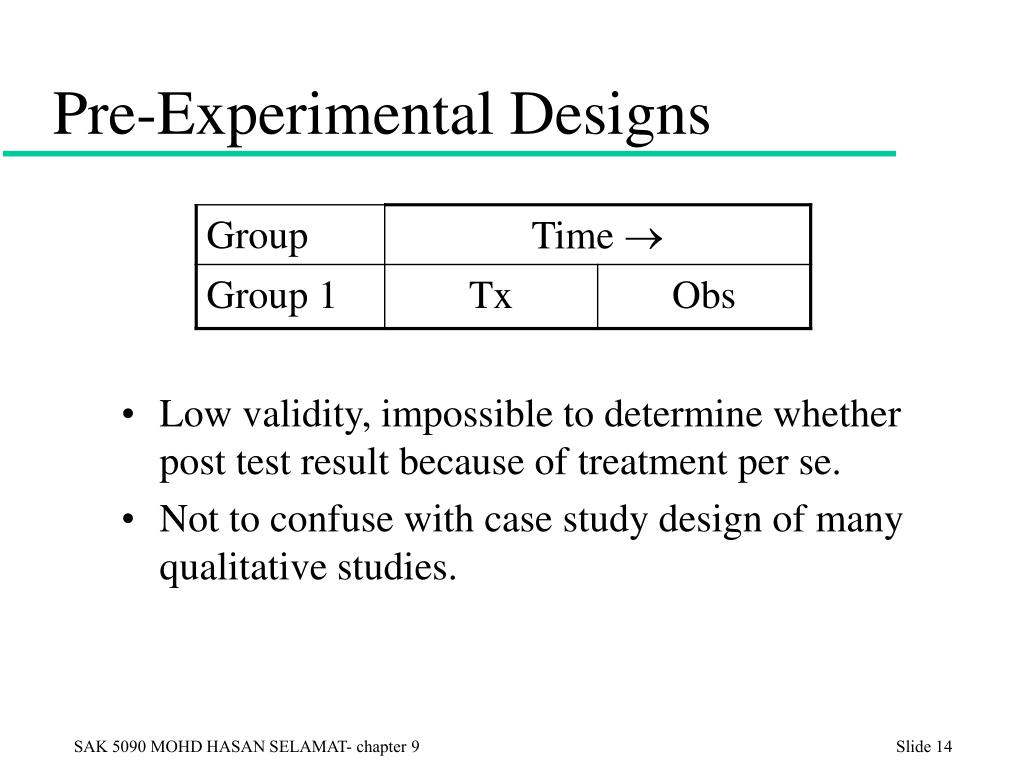Table Of Content

This way, organizations can determine an employee’s skill set at the point of employment. The first two of these groups are tested using the posttest-only method, while the other two are tested using the pretest-posttest method. Imagine taking 2 samples of the same plant and exposing one of them to sunlight, while the other is kept away from sunlight. Let the plant exposed to sunlight be called sample A, while the latter is called sample B. However, it requires careful planning and expertise to ensure that these "stop or go" decisions are made correctly and without bias.
Insufficient or Incorrect Statistical Analysis
In pre-experimental research design, either a group or various dependent groups are observed for the effect of the application of an independent variable which is presumed to cause change. It is the simplest form of experimental research design and is treated with no control group. This type of design became popular in the early stages of various scientific fields. Researchers used them to scratch the surface of a topic, generate some initial data, and then decide if it's worth exploring further. In other words, pre-experimental designs were the stepping stones that led to more complex, thorough investigations. Before we dig into the different types of experimental designs, let's get comfy with some key terms.
Repeated Measures Design
Experimental research examples are different, depending on the type of experimental research design that is being considered. The most basic example of experimental research is laboratory experiments, which may differ in nature depending on the subject of research. Some examples of quasi-experimental research design include; the time series, no equivalent control group design, and the counterbalanced design.
Impact of measurement noise, experimental design, and estimation methods on Modular Response Analysis based ... - Nature.com
Impact of measurement noise, experimental design, and estimation methods on Modular Response Analysis based ....
Posted: Thu, 01 Nov 2018 07:00:00 GMT [source]
Independent variable (IV)
Social Psychology Research Methods - Verywell Mind
Social Psychology Research Methods.
Posted: Mon, 06 Nov 2023 08:00:00 GMT [source]
Each of the participants taking part in your experiment would only be assigned to one of the conditions. The control group allows you to see just how effective or ineffective your intervention was when you compare data at the end of your study. Experimental Research is research that randomly selects subjects to participate in a study that includes some kind of intervention, or action intended to have an effect on the participants. Simply put, the dependent variable is what is measured to assess the experimental outcome. Experimental research design provides researchers with a controlled environment to conduct experiments that evaluate cause and effect.
Other methods of data collection
Imagine wanting to know how people of different ages feel about a new video game. Instead of waiting for years to see how opinions change, you could just ask people of all ages what they think right now. Plus, keeping track of participants over many years can be like herding cats—difficult and full of surprises. And speaking of success, the factorial design has been a hit since statisticians like Ronald A. Fisher (yep, him again!) expanded on it in the early-to-mid 20th century.
The neat thing about this design is that it allows each participant to serve as their own control group. Instead of giving one type to one group and another type to a different group, you'd give both kinds to the same people but at different times. Repeated Measures Design is all about studying the same people or subjects multiple times to see how they change or react under different conditions.
There is a solution to the problem of order effects, however, that can be used in many situations. It is counterbalancing, which means testing different participants in different orders. The best method of counterbalancing is complete counterbalancing in which an equal number of participants complete each possible order of conditions.

Frequently Asked Questions about Experimental Designs
First, you'd give all the kids a multiplication test—that's your pretest. If the kids do better on the second test, you might conclude that the program works. A high-profile example of Mixed-Methods Design is research on climate change. Scientists use numbers and data to show temperature changes (quantitative), but they also interview people to understand how these changes are affecting communities (qualitative). You have to be skilled in different research methods and know how to combine them effectively.
Learn with 76 Experimental Designs flashcards in the free StudySmarter app
There is no reason that a researcher could not use both a between-subjects design and a within-subjects design to answer the same research question. In fact, professional researchers often take exactly this type of mixed methods approach. The subjects were observed for a year, and the number of seizures for each subject was recorded. Identify the explanatory variable (independent variable), response variable (dependent variable), and include the experimental units. The use of a control group is an important experimental design method that involves having a group of participants that do not receive the treatment or intervention being studied. The control group is used as a baseline to compare the effects of the treatment group.
Instead of summing it up in numbers, you’ll need to comb through the data in detail, interpret its meanings, identify patterns, and extract the parts that are most relevant to your research question. It’s also important to create a data management plan for organising and storing your data. As well as choosing an appropriate sampling method, you need a concrete plan for how you’ll actually contact and recruit your selected sample. For valid and reliable results, your measurement materials should be thoroughly researched and carefully designed. Plan your procedures to make sure you carry out the same steps in the same way for each participant.
There are many other ways you might collect data depending on your field and topic. Observations may be conducted in real time, taking notes as you observe, or you might make audiovisual recordings for later analysis. In these types of design, you still have to carefully consider your choice of case or community. You should have a clear rationale for why this particular case is suitable for answering your research question. For practical reasons, many studies use non-probability sampling, but it’s important to be aware of the limitations and carefully consider potential biases.

No comments:
Post a Comment